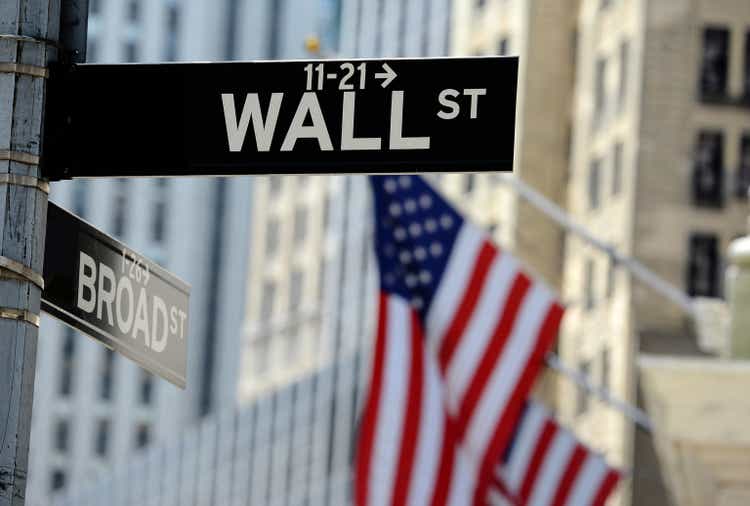robertcicchetti/iStock via Getty Images
The lead article on the front page of the Financial Times carried the following headline:
“Jobless Rate Signals Big Fed Rate Rise.”
The article begins:
“The robust pace of US jobs growth cooled in September but the unemployment rate unexpectedly dropped, firming expectations that the Federal Reserve will raise interest rates by another 0.75 percentage points at its next meeting in November.”
When investors got this news on Friday morning, stock prices crumbled.
The S&P 500 Stock Index dropped 2.8 percent on Friday or 104.86 points. The Dow Jones Industrial Average declined by 2.1 percent or 630.15 points. And, the NASDAQ Composite fell 420.91 points or 3.8 percent.
The Federal Reserve dominates the stock market these days.
It seems like every bit of news coming out has to be analyzed in terms of how that piece of information will impact the monetary authorities.
And, so, last week, on Monday, the S&P 500 rose by 92 points. On Tuesday, the rise was 113 points. Wednesday’s index dropped 89 points, but then on Thursday, the drop amounted to 39 points followed by a fall of 105 points on Friday.
At the start of the week, the news led investors to feel that the Fed might ease up its monetary policy sooner, rather than later. At the end of the week, the news led investors to feel that the Fed was going to have to stay firm and raise its policy rate of interest by 75 basis points at the November meeting of the FOMC.
What matters to investors these days is what they think that the Federal Reserve is going to do.
The news is only important as it might make the Fed go one way or another.
Is This The Right Take?
My concern is that this focus is not quite right.
The Federal Reserve is raising its policy rate of interest and this will impact other rates of interest in the marketplace.
But, more important is what the Federal Reserve is doing to its portfolio of securities.
The Federal Reserve has implemented a plan to reduce the size of its securities portfolio by about $95.0 billion per month.
Since March 16, the Fed has reduced its securities portfolio by about $160.0 billion.
This has been labeled “Quantitative tightening.”
We have gone through two episodes of “Quantitative easing,” one under Ben Bernanke as he produced the economic recovery following the Great Recession, and one by Jerome Powell as he and the Fed fought the effects of the spread of the Covid-19 pandemic.
Mr. Bernanke took the Fed through three rounds of “Quantitative easing” as he spurred on the economy and Mr. Powell took the Fed through 18 months of “Quantitative easing” when the Federal Reserve added $120.0 billion in securities to its portfolio every month.
This seems to be the “new” way the Fed does things.
Now, with “Quantitative tightening”, the Fed plans to reduce the size of its securities portfolio by about $95.0 billion out until 2024.
This securities reduction program is the part of the Fed’s policy that I think investors should be focusing upon.
This is the part of the Fed’s program that I believe is the most vulnerable to the possibility that the Fed will move away from.
This is what I think investors need to keep their eyes on because it is the core of the Fed’s tightening program and going off of this schedule will really mean that the Fed is not getting back to greater control over money matters.
Focus
When the Fed was buying securities on a regular basis, the Fed’s purpose was to continuously underwrite a steady increase in stock prices.
This increase in stock prices, the Fed believed, would create a “wealth effect” that would stimulate consumers to spend more and thus drive economic growth.
In the current situation, the Fed is trying to create a negative wealth effect that would dampen down consumer spending and, hopefully, ease the pressure on inflation.
The Fed wants to bring inflation back down to its target rate of 2.00 percent.
So, stock prices must decline, given the plan of the Federal Reserve, to stop inflation.
This is the model that the Fed is working from.
So, we need to keep our eyes on the size of the Fed’s securities portfolio.
Right now, the Fed seems to be pretty well on target.
So, where do we go from here?
The Future
If the Fed is able to carry out its plan of creating a “negative” wealth effect, a situation in which stock prices are falling and consumer wealth is also falling, then the Fed will be on path toward achieving its goal.
That is, the stock market must decline, and must decline for some extended period of time.
That is how this “new” Federal Reserve policy works.
Will the Fed break from this goal?
Well, we shall see how the Fed responds to a stock market that is dropping relatively strongly.
Can the Fed keep up its stance if the stock market “tanks”?
Just how much of a decline can the Fed really tolerate?
Yes, expect the Federal Reserve to raise its policy rate of interest by 75 basis points in November and by at least another 50 basis points in December.
But, watch the securities portfolio. The securities portfolio is really the foundation of the Fed’s focus at the present time.


Be the first to comment